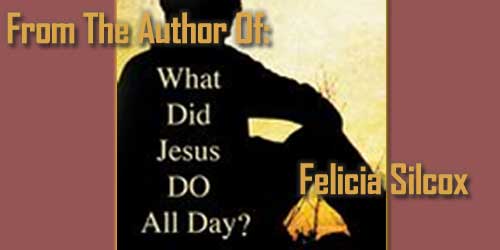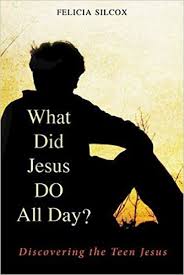The story behind What Did Jesus DO All Day? began in 1968. A young teaching nun, I was taking a college theology course taught by a brilliant Lebanese priest, Father Seely Beggiani of the Christian Maronite rite.
Today, Bible study groups often turn to Middle Eastern culture for a better understanding of Scripture, but back then we had little insight into the customs and traditions of the world Jesus knew. Father Beggiani’s teaching, filtered through his Syriac and Coptic background, challenged our Western-oriented image of Jesus. He introduced us to a dynamic and fearless Rabbi, one who immersed Himself in the Law of Moses, risked rejection, never took the easy way out, embodied the mystery of God’s tenderness, and refused to save Himself so that He could save us.
Father Beggiani alluded to the diverse beliefs held by early Christian followers, including the writers of the Lost Gospels. “Some Eastern ancients hinted Jesus was married,” he said. The class (all nuns) gasped. A few muttered angrily, but he was undeterred. “Ask yourselves: Can anything change who He was or what He did?” Those words burned in my heart, molding my faith through the years that followed and the crises that tested it. Father Beggiani (now a bishop) had planted a seed.
About the same time, my maternal grandfather died. He had raised his children in the Christian faith he himself practiced. But found hidden among his belongings was his Polish passport—stamped JUDEN. Suddenly, Jesus’ Jewishness became personal. What terror could make someone I loved (and thought I knew) give up his religion and lead a secret life? I wanted to know more about my lost heritage, but didn’t do much about it.
Fast forward many years. After leaving the convent and marrying, I taught high school Confirmation classes for my church. During one discussion of the Gospels, I reminded my students that Jesus was a Jew. “He was NOT!” cried one teen, his face red with anger at what he perceived was an insult.
Stunned, I began to collect outside articles to share with the class, historical and archaeological material on first-century Jewish culture in the Holy Land. The idea for a teen book—one that would bring Jesus and His world to life, and show how Christianity sprouted from a Jewish foundation—began to grow.
Looking into my heart, I asked again, “Who is this Jesus of Nazareth?”—and found His own answer in Scripture. “Anyone who has seen me has seen the Father” (John 14:9). If this was to be God’s work, the project needed His blessing and had to be grounded in prayer. I looked to early followers of Jesus’ Way, the desert mothers and fathers, for inspiration and adopted their mantra, “Be still, and know that I am God!” (Psalms 46:10). Every chance I had, I worked on the book.
Among the richest resources available on the Jewish roots of Christianity were articles written by JerusalemPerspective.com’s dedicated scholars. Subjects ranged from Jesus’ words seen in a new light to first-century Jewish women, synagogues, Pharisees, Sadducees, Sabbath observance, education, languages, marriage, death and burial. I devoured books and magazines featuring current information on biblical archaeology, historical writings, Middle Eastern cultural studies, and the Jewish way of life.
Integrating and presenting all this material in a way that would, hopefully, appeal to teen readers took more than seven years. During that time, I queried several publishers and collected enough rejection letters to wallpaper a room. Was this really what God wanted me to do?
Finally, Morehouse Publishing accepted the manuscript. My editor, a wonderful and faith-filled woman, trimmed and shaped the book with expert guidance. She asked me to launch a website (whatdidjesusdoallday.com), where I could post additional information, updates on recent discoveries, pertinent news events, and suggested activities for teachers and youth ministers. All the photos she chose for the book, as well as those on the website, were graciously provided by Todd Bolen (BiblePlaces.com).
Humbled and grateful as I look back on all the amazing people and connections involved, I praise God for His merciful goodness in bringing this work to fruition. Sincere thanks also goes to David Bivin, whose own writings greatly influenced the book, for kindly inviting me to tell its story.

































































































Comments 4
Yes we must absolutely reverse the thinking in this generation. Great work as we need to equip those going off to college as though being thrown to the wolves. This is a timely study which I pray will be a catalyst for continuing exploration and education to our teens, children and young adults.
Author
Thank you, Yakov. Prejudice often appears rooted in fear, driven by our own ignorance of others’ beliefs and cultures. I couldn’t agree more that our hope for a peaceful future lies in opening the minds and hearts of our young people.
I appreciate your diligence and your heart for our LORD in writing your book. May He bless you for your faithfulness.
Author
Thank you for taking time to write such kind words. May God’s blessing strengthen you in your work, and to Him be the glory.